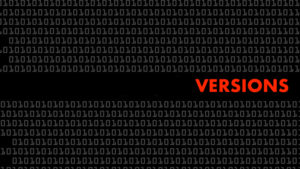Month: November 2018
Some people dream of success, while other people get up every morning and make it happen
FitRadar application versioning
In the last post, I wrote about FitRadar application’s release process and what kind of releases we are planning to have. And since every release is having a unique version number, I think it is a good time to talk about the release of versioning schemes in this post.
In our app we are planning to use the Semantic versioning schema that follows this pattern: Major.Minor.Patch, where
- Major number will be increased by 1 when breaking changes will be introduced that are incompatible with the previous Major version
- Minor number will be increased by 1 when a new functionality will be introduced that is backward compatible (at the same time patch number will be reset to zero)
- Patch number will be increased by 1 when a bug or set of bugs will be fixed that is backward compatible
But before we can start to apply Semantic versioning schema we still have to reach the phase when the application is stable and ready for production and that will be version 1.0.0. But until then when we are still in the development phase we are using a little bit different versioning schema that follows the pattern 0.x.y.
Our versioning schema during the development phase is tightly coupled with the application development life-cycle. In the very beginning of our project, we decided to adopt some of the Scrum project management aspects, particularly sprints or iterations. The length of the sprint is such that our team can deliver at least one use case from the user requirement list. Mostly but not always after every sprint we release an application with new major version x. Every application release can contain one or more use cases. During a sprint beside a new user story, we have to fix bugs or make improvements in the previous user story. When a bug was fixed or improvement made we release a new version with increased minor number y. It means that our application started with version 0.1.0 when the first use case was implemented.
Once we started to release our application to Google Play Store tracks we extended application version with an additional label denoting the track like this 0.x.y-track_name.
As you can see this versioning schema is not quite suitable for the production where each release should be stable and finalized. But during the development phase when each use case is iterated several times and after each iteration, we should have an application that we can install, demonstrate and test, this kind of versioning schema serves us very well.




